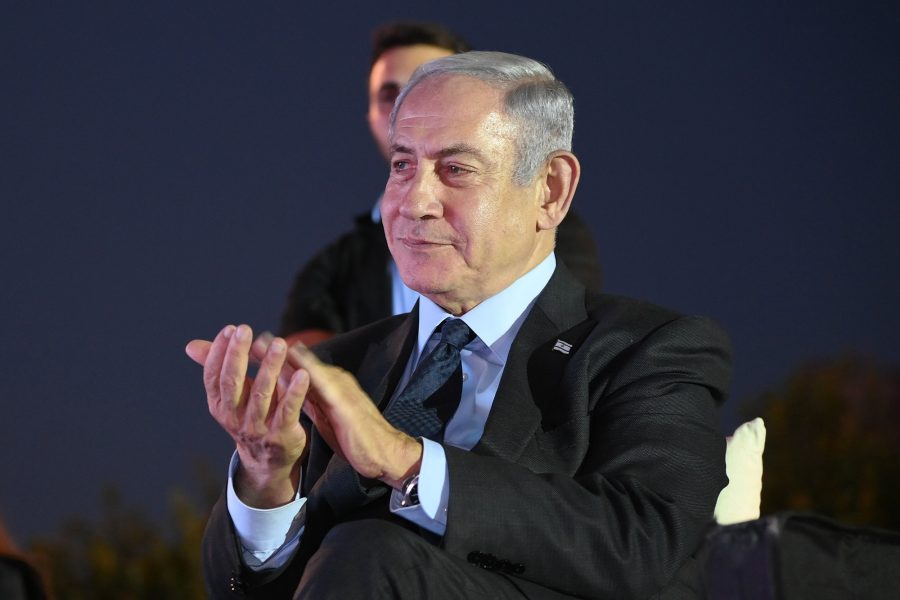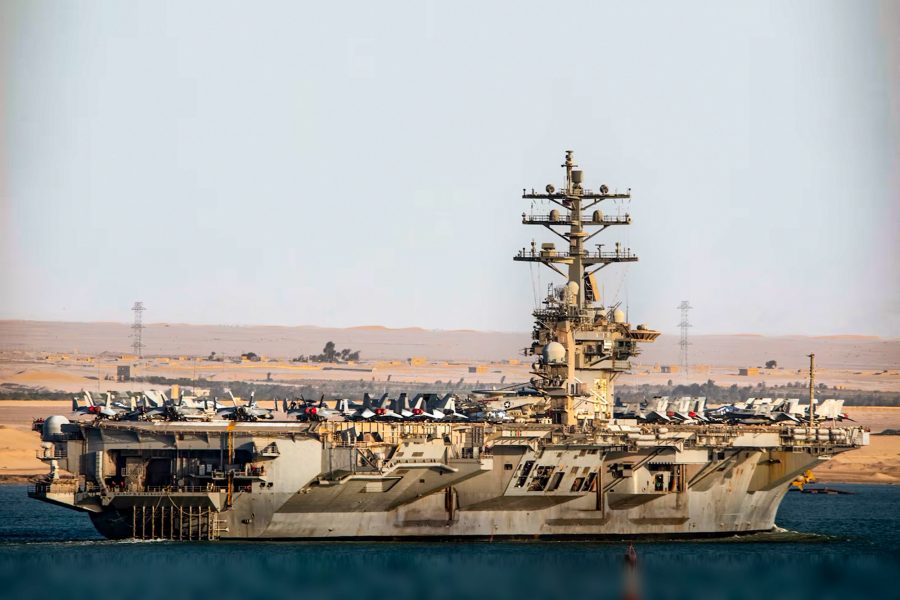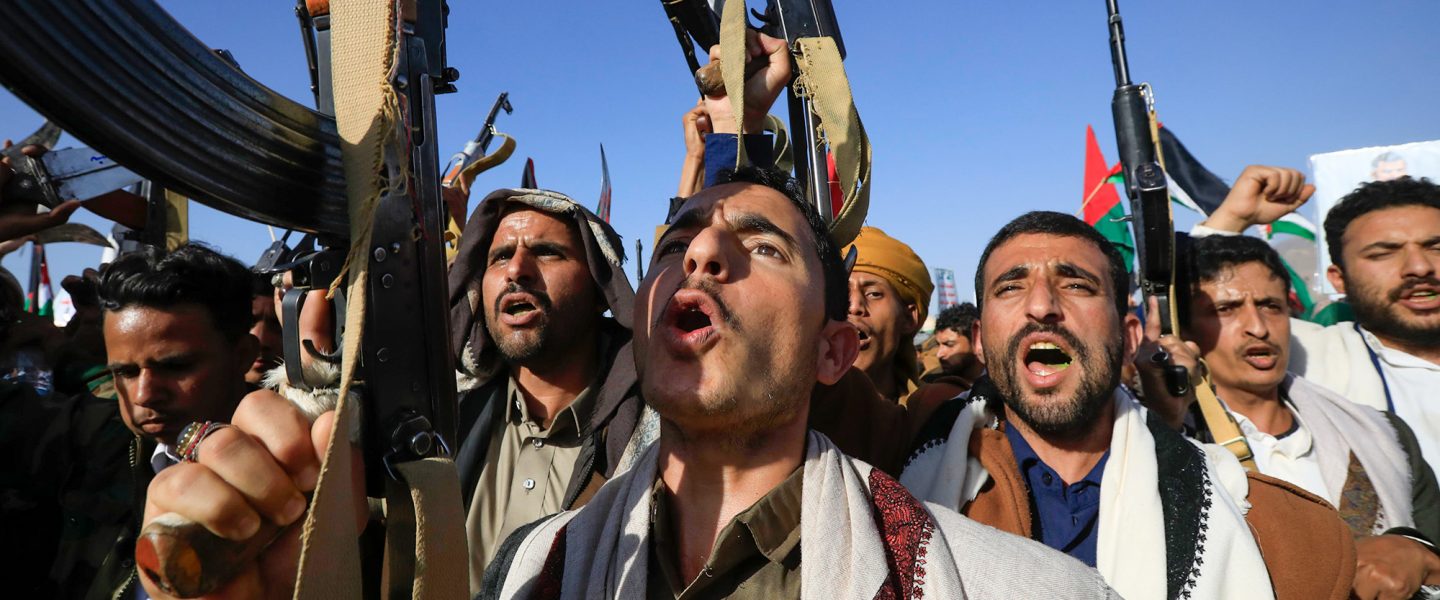Despite US efforts, events in the Middle East could be moving toward a larger war.
|
Listen To This Story
|
End strategies in chess usually involve a hapless loser being forced into a series of defensive moves that ultimately end in checkmate. US Secretary of State Antony Blinken must have been contemplating this dispiriting scenario during his fourth trip to the Middle East last week. For Blinken and the Biden administration, checkmate is nothing less than a larger Middle Eastern war in which the US and the advanced industrial powers can only expect to lose.
On the surface, Hamas’s October 7 murder of more than 1,200 innocent Israeli civilians seemed inhumane and completely senseless, but intelligence services now know that Hamas spent more than a year planning the attack. Obviously, there was an objective in mind. It is not clear whether Iran was directly involved, but Iran is Hamas’s main supplier of weapons and training, and it is highly unlikely that Hamas could have carried out the attack without at least someone in Tehran knowing about it and ultimately approving it. Iran’s Revolutionary Guards, responsible for Iran’s military as well as many of Iran’s terrorist activities may be perverse, but they are not stupid.
The Iranians also had a motive for supporting Hamas. On January 3, 2020, the US used a drone strike to assassinate Qasem Soleimani, the commander of Iran’s al-Quds force, the division of Iran’s Revolutionary Guards that handles overseas clandestine operations. Soleimani, who was about to meet Iraq’s prime minister in Baghdad, had been largely responsible for expanding Iran’s use of surrogates, like Hamas and Hezbollah, that could act as cut-outs, furthering Iran’s foreign policy objectives without directly implicating Iran. Iran, which sees Israel as an extension of US policy in the Middle East, vowed revenge for Soleimani’s assassination.
Whether Iran was involved or not, it seems certain that Hamas knew that Israel would react to the October 7 carnage with blind rage and that innocent Palestinians would be the victims of that anger. For Hamas, the Palestinians of Gaza were apparently nothing more than collateral damage, a sacrifice to the militant organization’s determination to reconstruct the Middle East in its own ideological vision. Israel walked into a trap. It could have tried to selectively track down and eliminate the perpetrators of the October 7 attack. Instead, it engaged in massive bombing of just about everything and everyone in Gaza, while the actual perpetrators slipped away.
Whether Iran was involved or not, It seems certain that Hamas knew that Israel would react to the October 7 carnage with blind rage and that innocent Palestinians would be the victims of that rage.
The result is that Israel is now responsible for the deaths of more than 23,000 innocent Palestinian civilians, many of them women and small children. Israel has managed to blow up Gaza’s network of tunnels and it has destroyed a number of ammunition stockpiles, but the organizers of the October 7 massacre are most likely long gone and the rampage will do little to convince anyone of the falseness of Hamas’s initial argument that holds Israel to be the prime enemy of the Arab world. The indiscriminate bombing and now the forced starvation of a helpless population is causing more damage to Israel than anything Hamas could have hoped to achieve on its own.
The only logical move at this point is for Israel to declare a limited victory and extricate itself from Gaza as quickly as possible. What no one, including Blinken, counted on, however, was Israel’s embattled prime minister, Benjamin Netanyahu, putting his own interest above that of the country.
Even before October 7, Netanyahu’s political and personal fate was hanging by a thread. Netanyahu faces criminal charges of fraud, breach of trust, and receiving bribes, in an ongoing trial that has still not reached a conclusion. Last July, Netanyahu attempted to pass a law giving Israel’s parliament, the Knesset, authority to overrule Israel’s Supreme Court — which would have opened the way to a parliamentary veto of any guilty verdict against the prime minister. That political ploy led to months of protests, which included a significant part of Israel’s Defense Force and air force. The Supreme Court ruled against the proposed law on January 1. So far, Netanyahu has only managed to hold on to power by agreeing to a coalition in the Knesset that includes ultra-orthodox nationalists whose policies many Israelis find repugnant.

While Blinken and most of the rest of the world want peace, Netanyahu is well aware that his time as prime minister will most likely end abruptly as soon as the fighting in Gaza stops. He is figuratively riding a tiger that is likely to devour him as soon as he gets off — or is forced off. Netanyahu’s need to keep the fighting going is something that Washington is just beginning to come to terms with. Blinken and President Joe Biden offered Israel excellent advice. Netanyahu is clearly not listening. The question now is: What will he do next?
He has several options. He might try to trigger an even larger war against another of Iran’s Middle Eastern clients, Hezbollah in Lebanon. Further, since Iran has been supplying arms, ammunition, and funding to three of its surrogates — Hamas, Hezbollah, and the Houthis in Yemen — he might even try to get the US to extend the fighting to Iran itself. In the meantime, the rampage through the ruins of Gaza is causing incalculable harm both to Israel and its supporters, in this case, primarily the US.
In case anyone failed to get the point, South Africa filed a formal complaint at the United Nations’ International Court of Justice last week, charging that Israel is effectively engaged in genocide against Palestinians. The campaign in Gaza probably does not constitute genocide — the term, technically, refers to the attempt to kill or eliminate an ethnic group or culture; what Netanyahu is really engaging in here is “ethnic cleansing.” He doesn’t want to kill all Palestinians; he simply wants to force them to move somewhere else. The end result could be just as bad.
Rather than admitting that there is a problem or at least showing some restraint, Netanyahu is determined to double down. Gaza has largely been flattened into a rubble-strewn wasteland. There is no end in sight and no one has any idea of what to do with the 2 million Palestinians that the Israeli onslaught has displaced or how Israel will ever get over the guilt of the nearly 85,000 civilians killed or wounded as a result of Netanyahu’s onslaught. The organizers of Hamas don’t really care, and Netanyahu and his cabinet make it clear that they don’t care much either.
In Washington, Netanyahu has transformed himself from an unfortunate victim to a significant part of the problem, but it is unclear what anyone can do about it. Netanyahu may or may not survive the debacle, but the US’s pledge of unqualified support to Israel is clearly also damaging American interests in the region. If you see the recent developments in the Middle East as part of a coordinated strategy similar to an endgame in chess, rather than a series of unrelated events, the aftermath of the Israeli assault in Gaza counts as a victory for Hamas and possibly Iran.

The next move from the Hamas/Iran camp, which is now starting to be referred to as the Iranian “axis of resistance,” involves the Houthis of Yemen. Admittedly, few people in Europe and even fewer in the US have much of an idea of who the Houthis are, or for that matter, know much about Yemen. Suffice it to say that Yemen is populated by fierce mountain fighters equal to those you might expect to find in Afghanistan. Yemen briefly made headlines in 1986, when between 9,000 and 10,000 people were killed in clashes between two south Yemen Marxist factions. The British royal yacht, Britannia, had to be pressed into service to help evacuate hundreds of European nationals at risk of being caught in the crossfire.
For the last few years, the Houthis, located largely around the tip of the Arabian Peninsula’s entrance to the Red Sea, have been engaged in off-and-on warfare with Yemen’s official government and, incidentally, with Saudi Arabia. The Houthis’ principal provider of arms, money, and support in this venture is Iran, which has its own agenda and has long competed with Saudi Arabia for influence in the region.
The Houthis’ strategic importance stems from the fact that about a third of the world’s maritime container shipping passes through the Red Sea in order to enter or exit the Suez Canal, the shortest route from Asia to Europe. The alternative is to spend months circumnavigating the entire continent of Africa.
The Houthis entered the current fray by sending kamikaze drones to attack Saudi Arabia and then Israel. US Navy ships easily shot the drones down, but then the Houthis shifted their attention to ships entering the Red Sea. After a few attempted attacks, most of the major shipping companies said they’d prefer to take the much longer route around Africa, adding weeks if not months to the journey. An immediate indicator of just how serious the situation is came last week when Tesla announced that its factories in Germany will soon cease production for at least two weeks. The computer chips they need to continue assembling electric vehicles are stuck on a ship somewhere off the coast of Africa. Tesla is just the first indicator of what is likely to come. The added shipping time will undoubtedly trigger a worldwide increase in inflation.
Allies had earlier urged the US to bomb the Houthis. Washington demurred. The Houthis increased the pressure. Finally, the US and Britain bombed an estimated 70 Houthi ammunition and radar sites. Analysts noted that goading the US into bombing the sites had probably been the Houthis’ goal all along.
The bombing put the Houthis back in the news as a potentially significant international player. Now, people in the West have begun reading up on who the Houthis are and what they want. The Houthi drones and missiles didn’t cause any real damage. They were too easy to shoot down. Nothing newsworthy there. But any time the US bombs someone, it tends to get headlines. In this case it helped recast the Houthis as defenders of embattled Palestinians rather than just another rebellious group with territorial ambitions that no one really cares about.
The bombing also moved the US one step closer to confrontation with Iran, which, given the current state of political paralysis in Congress, is the last thing that Washington is prepared to deal with. It is safe to say that Blinken knew the downside attached to the bombing, but like any doomed chess player forced to play defense, Washington had to do something. Chalk up two wins to the axis of Iran-led resistance.
The coup de grace in this scenario could well come from recent reports that Iran is accelerating its production of uranium. According to The Wall Street Journal, the Pentagon now believes Iran has enough enriched uranium to make three atomic bombs. Netanyahu has argued all along that Israel or the US will eventually be forced to take out Iran’s nuclear facilities. Iran may not have the missiles needed to deliver a nuclear bomb, but a missile isn’t really necessary. A bomb on board a ship, or in a truck, can do plenty of damage.
In the past, Netanyahu has frequently argued in favor of decisive action to end Iran’s nuclear capability once and for all. Israel’s intelligence agency, the Mossad, is believed to have assassinated a number of Iranian nuclear scientists and, in 1981, Israel bombed Iraq’s Osirak nuclear reactor in order to keep Saddam Hussein from obtaining nuclear capability. The French had built the reactor and Israel had critical information concerning exactly how to destroy it. Iran’s nuclear installations are dispersed and, for the most part, dug deep underground. Destroying these facilities would be infinitely more complicated and dangerous, and would likely increase Iran’s determination to obtain a nuclear weapon if it does not already possess one. On the other hand, Blinken has to consider the possibility that Netanyahu might try to use the Iran threat to engineer a final showdown before losing political power in Israel once and for all.
If seen as players in a political game of chess, Hamas and the Iranian axis of resistance are clearly on the attack and the Biden administration is being forced to play defense. The pressing question is, what does Iran really want? Recent events could simply be Iran’s way of sending a message that Iran wants to be seen as a regional power that has to be taken seriously, or they could be part of a more extensive strategy to actually exert that power.
For the moment, US experts say that they are convinced that Iran does not want a full-out war. But the clashes over the last few weeks have been increasingly confrontational. Last Thursday, Iran’s navy seized an oil tanker, apparently in retaliation for the US Navy seizing a million barrels of Iranian crude oil that was being sold despite US sanctions. On Tuesday, Iran-backed Houthi rebels fired 18 drones, two anti-ship cruise missiles, and a ballistic missile at ships in the Red Sea. The drones and missiles were destroyed before they could do any damage, but it took the combined efforts of aircraft from the US Navy’s aircraft carrier USS Dwight D. Eisenhower and interceptions from three US Navy guided-missile destroyers and a destroyer from Britain’s Royal Navy to thwart the attack.
When US Navy Seal teams intercepted a suspect Arab sailing dhow in the Gulf of Aden, they were surprised to find that the Iranian cargo included Iranian-manufactured parts for cruise and ballistic missiles, undoubtedly destined for the Houthis. The missile parts were fairly sophisticated, an indication that Iran is determined to keep up the pressure despite recent US airstrikes against Houthi installations.
It is possible that Iran is simply trying to stir the pot, but it could also have a different strategy in mind. The Houthi attacks have already seriously threatened to increase costs to the global supply chain and, consequently, to raise the price of most everything consumers buy at retail, just as Biden was hoping to curb inflation in the US. All-out war in the Middle East would threaten the flow of the world’s energy supply and have an even more catastrophic impact on the global economy.
Until now, the US has tried to control Iran with economic sanctions; Iran may simply be signaling that it can retaliate against American pressure in its own way if it wants to. If that is the case, the situation in Gaza and Netanyahu’s aggressive tactics have shifted opinion in the Middle East in favor of Iran’s so-called axis of resistance. It may be in everyone’s interest to get back to talking to one another rather than risk starting World War III.





